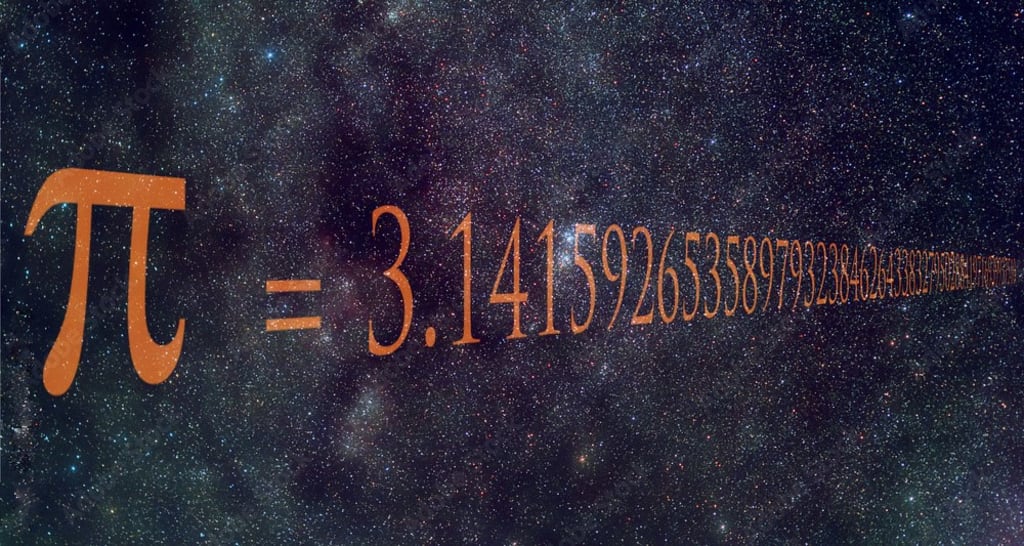Importance of Pi in NASA:
Agent Name : The Pi Role : Archimedes' constant & Geometry.

Pi Day is celebrated annually on March 14th, also known as 3/14 in the American date system. It is a day where mathematicians and scientists from all over the world celebrate the mathematical constant π (Pi), which is used to denote the ratio between a circle’s circumference and its diameter. The approximate value of Pi is 3.14, which is why March 14th is celebrated as Pi Day.
Pi is an incredibly important mathematical constant that is used in a wide range of scientific applications. One of the most interesting uses of Pi is in the work of NASA, the American space agency. NASA uses Pi in a variety of ways to explore and study the universe.
One way NASA uses Pi is to map unknown worlds. When spacecraft visit other planets, they create maps that document the processes on the planet, such as how water flows around the globe. As they orbit other planets, spacecraft capture images in rectangular fields of view, which capture images in "bands" on the planet’s surface. To figure out how many images it will take to map an entire planet, scientists use a formula that includes Pi.
Pi is also used in finding new worlds. Powerful telescopes in space and on Earth keep track of the amount of light that distant stars emit. When an exoplanet, a planet outside of our solar system, passes by the star, the telescope will notice a decrease in the star's light output. Scientists use this percentage figure and the formula for the area of a circle to derive the size of the planet that passed in front of the star.
After discovering new exoplanets, one of the most interesting questions is whether those planets can support life as we know it. If they can, they are referred to as "potentially habitable". Scientists use Pi to understand whether exoplanets are habitable. For a planet to be habitable, it needs to be in a "Goldilocks zone," where it is neither too far from the star it is orbiting nor too close.
It needs to receive the right amount of heat for life to happen, but too much heat can stop it altogether. Scientists use Pi to find out the inner and outer edges of the Goldilocks zone around a particular star. After that, they use Pi and Kepler’s third law to calculate how long a particular exoplanet takes to make one full orbit of a star, which will reveal the planet’s location and whether it is in the Goldilocks zone.
Pi is also helpful when it comes to parachuting on Mars. NASA scientists use Pi to land rovers and landers on Mars. According to the space agency, no Mars landing is exactly the same, but they all have one thing in common: parachutes. When dropping something onto the Martian surface, it is imperative that the object is slowed down with the help of the thin Martian atmosphere.
When designing the parachutes that can do this, engineers have to take into account all sorts of things, from the mass and velocity of the spacecraft to the elevation of the landing site and the density of the atmosphere. Pi helps them decide how big the parachute needs to be so that it can generate enough drag to slow down an object’s descent.
Pi is also used in tracking asteroids and comets. Scientists at NASA’s Center for Near-Earth Objects are tasked with determining how fast asteroids and comets are rotating, among other things. Based on observations made from Earth, scientists can estimate how long it takes an object to make one complete rotation on its axis. Using this figure and the formula with Pi, scientists can estimate the angular velocity of the object in question, whether it is an asteroid or comet.
Pi is not only used by NASA. In the field of mathematics, Pi is used in many ways for calculation purpose. Pi is also instrumental in understanding the universe's behavior through its laws of physics. The famous physicist Albert Einstein developed his theory of General Relativity, which explains how gravity works and the relationship between space and time.
General Relativity is built on the idea that space is curved and that objects move along this curved path. Pi is used to calculate the curvature of space, which is a fundamental concept in Einstein's theory. The value of Pi is also used in calculations related to quantum mechanics, which deals with the behavior of particles at the subatomic level.
Pi is also important in many other areas of mathematics, including geometry, trigonometry, and calculus. In geometry, Pi is used to calculate the area and circumference of circles, as well as the volume of spheres and other round objects.
In trigonometry, Pi is used to calculate the values of sine, cosine, and tangent functions, which are essential in understanding triangles and their angles. In calculus, Pi is used in integration and differentiation, which are fundamental concepts in the study of calculus.
The value of Pi has fascinated mathematicians for centuries, and many have spent their entire lives trying to calculate it to as many decimal places as possible. The first known calculation of Pi dates back to ancient Egypt and Babylon, where it was approximated to be around 3.125. In ancient Greece, Archimedes used a method of calculating Pi using inscribed and circumscribed polygons, which gave him an approximation of Pi to two decimal places.
Over the centuries, mathematicians have continued to refine their methods for calculating Pi, and today, it has been calculated to over 31 trillion decimal places. However, the exact value of Pi remains unknown, and it is thought to be an irrational number, meaning that it cannot be expressed as a finite or repeating decimal. This mysterious quality has made Pi even more intriguing to mathematicians and scientists.
In conclusion, Pi is an essential mathematical constant that has a wide range of applications in science and technology. From exploring the universe to designing parachutes and landing spacecraft, Pi plays a vital role in many areas of scientific research.
It is also an important concept in mathematics, including geometry, trigonometry, and calculus, and has fascinated mathematicians for centuries. As we celebrate Pi Day every year, we are reminded of the importance of this fundamental constant and the role it plays in our understanding of the world around us.
About the Creator
Enjoyed the story? Support the Creator.
Subscribe for free to receive all their stories in your feed. You could also pledge your support or give them a one-off tip, letting them know you appreciate their work.





Comments
There are no comments for this story
Be the first to respond and start the conversation.